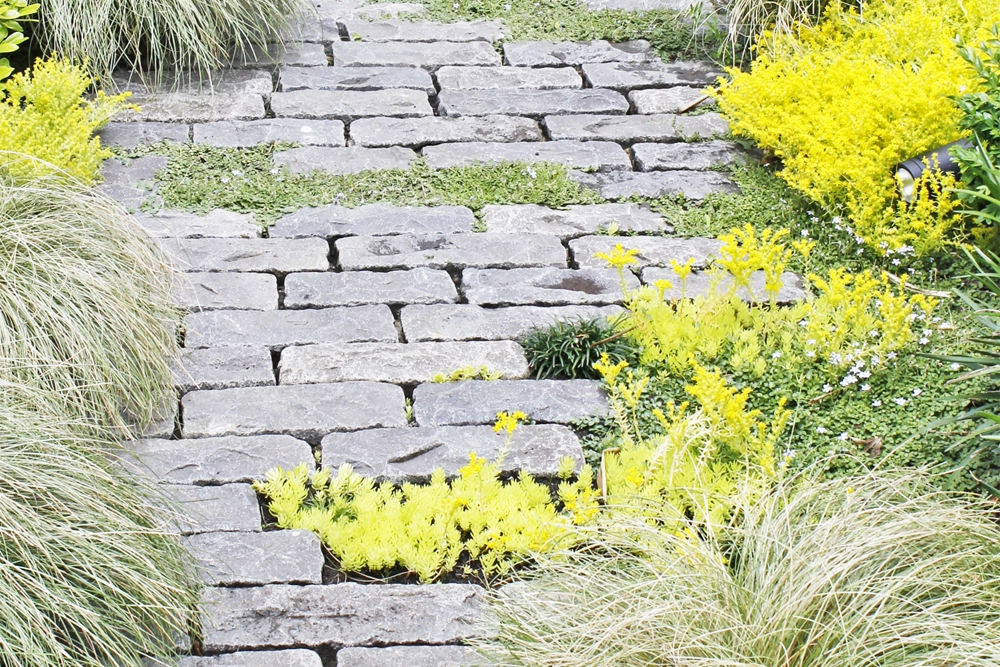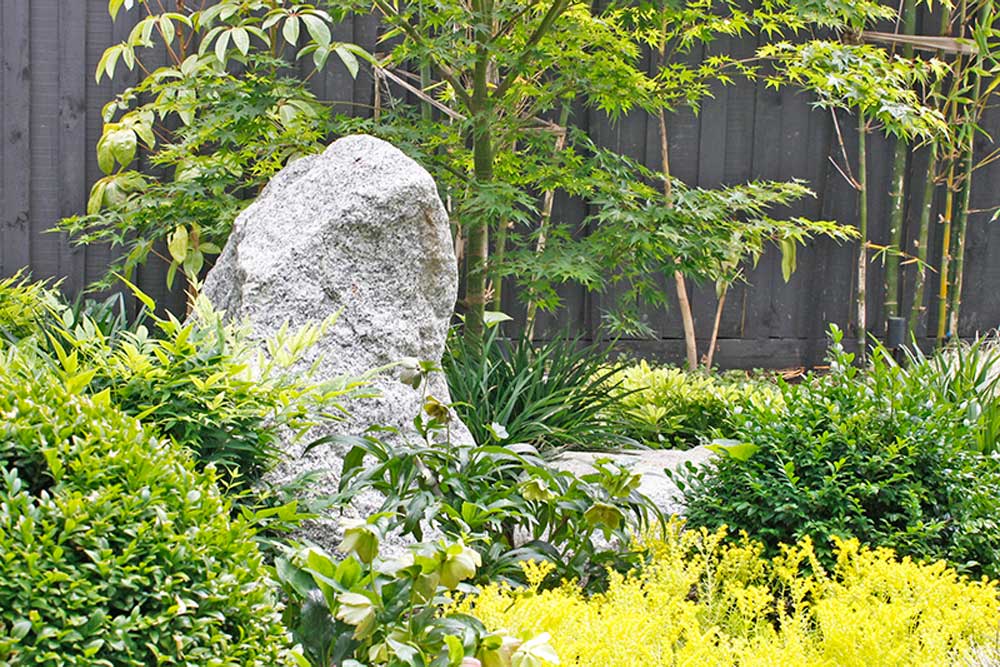Garden pathways serve both function and aesthetics, shaping the flow and style of your outdoor space. In this blog, 6 Garden Path Ideas to Enhance Your Outdoor Space, we explore different pathway designs, from stepping stones and gravel to concrete and timber, showcasing how the right path can transform your garden.
Garden Path Style Ideas
1. Paved Path on Concrete
A paved path on a concrete base is one of the most straightforward and durable options, especially in formal garden designs. If your budget allows, natural stone is an excellent choice for a long-lasting, high-end finish.
Commonly used natural stone on concrete options include:
- Bluestone is a volcanic rock widely used in commercial and residential outdoor spaces throughout Melbourne. It is sourced from local Victorian quarries and features natural pores, giving it a unique texture. Its grey tones complement modern architecture, making it a popular choice for paving and landscaping.
- Granite is primarily sourced from overseas and ranges in colour from white-grey to dark grey. It is highly valued for its hardness and durability. Its textured surface is particularly popular in Japanese-style gardens. Granite cobblestones are also widely used for building pathways.
- Travertine is a type of limestone that is often used in French provincial-style gardens and tropical resorts. Its creamy colour blends well with pools, palm trees, and coastal settings. In the Australian market, most travertine paving is sourced from Turkey and Greece.
These natural stones are available in a range of sizes. Rectangular formats such as 800 x 400 mm and 600 x 300 mm are widely used, while the French pattern remains a popular choice for creating elegant surfaces.
Building a natural stone pathway works particularly well in gardens with strong visual axes or when leading to a major entry point of the house, creating a structured and cohesive look. One essential step in natural stone installation is applying a sealer. Sealing the stone helps prevent oil and debris buildup, making maintenance easier and keeping the surface looking its best over time.

Image: Bluestone (with crazy paving), credit Ploterra

Image: Granite (French pattern), credit Ploterra
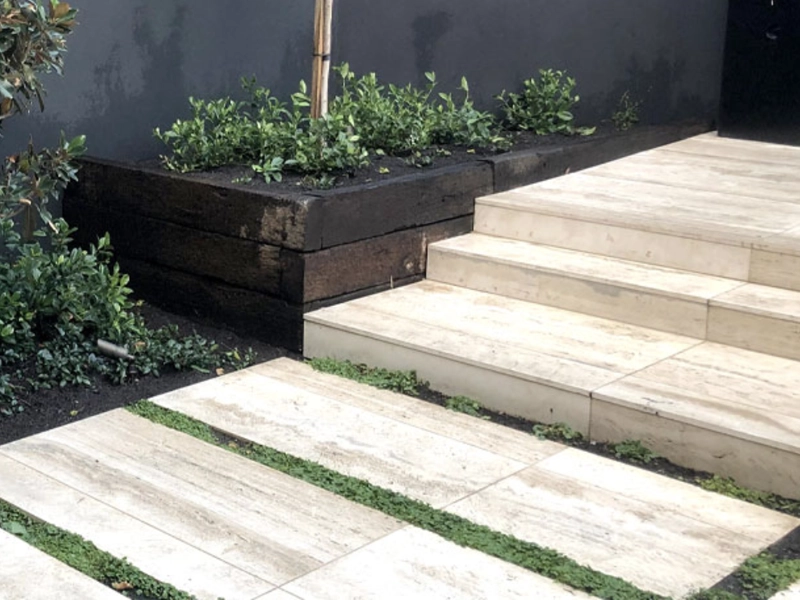
Image: Tavertine (French pattern), credit Ploterra
2. Natural Stone Laid on Crushed Rock
For a more organic look that blends with surrounding vegetation, using thick natural stone laid on crushed rock is a great option. This approach creates a softer, more natural transition between hardscape and garden beds while maintaining durability and function.
Commonly used natural stone options include:
- Bluestone steppers – create a natural, low-maintenance pathway. The deep grey stone contrasts beautifully with lush green ground cover, softening hardscape elements.
- Granite flagging with irregular edging – creates an organic look while offering durability and slip resistance. This low-maintenance option withstands weather extremes and heavy foot traffic, making it a long-lasting choice for pathways. Granite flagging comes in various shapes and sizes, offering flexibility in design. The image below features Filetti Granite, a narrow-cut option that creates a textured, natural look.

Image: Bluestone steppers – Sandringham Project, credit Ploterra
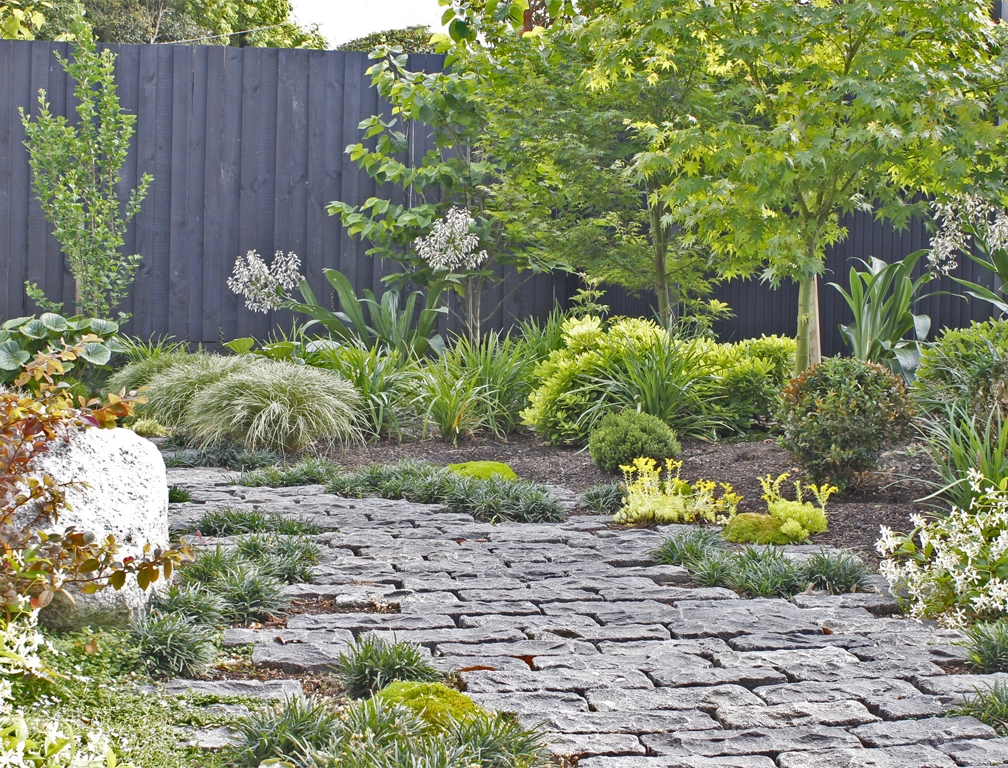
Image: Filetti Granite flagging with irregular edging – Kew Project, credit Ploterra
To soften the look and add greenery between the stones, consider low-growing ground covers such as:
Dichondra repens (kidney weed) – is a low-growing, spreading plant that forms a soft, carpet-like ground cover around pathways, adding greenery while helping to suppress weeds.
Ophiopogon japonicus (dwarf mondo grass) – is a hardy, low-maintenance plant that adds a neat, structured look around pathways while softening hard edges.
- Pratia pedunculata (white star creeper) – is a low-growing ground cover with small white flowers, perfect for filling gaps between pathway stones.
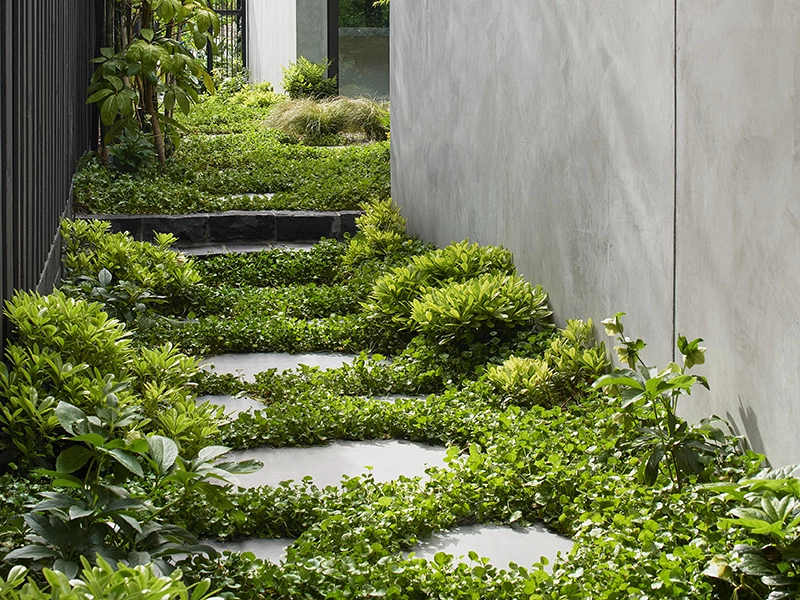
Dichondra repens (kidney weed), credit Ploterra
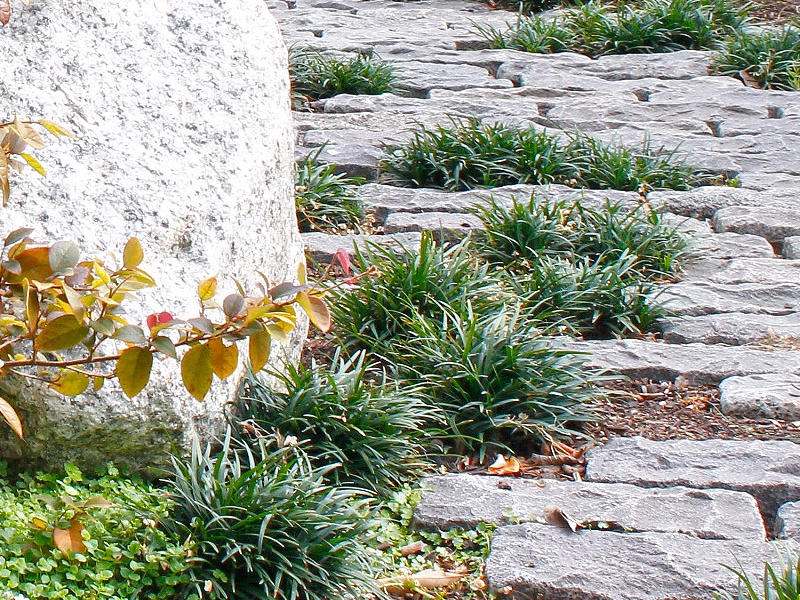
Ophiopogon japonicus (dwarf mondo grass), credit Ploterra

Pratia pedunculata (white star creeper), credit Ploterra
3. Brick path
Bricks have been used for centuries and remain a timeless choice for garden pathways. Their warm tones and natural texture add character, while the variety of laying patterns—such as herringbone, basket weave, running bond, monks bond, or brick on edge—offers plenty of design flexibility to suit different styles.
For durability, bricks made for paving can be set on concrete, providing a solid and long-lasting surface. Alternatively, traditional building bricks can be laid on a sand base, creating a softer, more permeable path that blends with the garden.

4. Gravel Path with Edging
Gravel paths offer a rustic and flexible option for garden pathways, providing an easy-to-install, permeable surface that allows for good drainage. Gravel comes in various sizes, including 7mm, 10-14mm, and 20mm, each offering different textures and aesthetic effects for your garden. Smaller gravel sizes, like 7mm, create a smoother, more even surface, while 20mm gravel provides a more textured and natural look. Gravel also comes in a variety of colours, from soft neutrals to darker tones, allowing you to match it with the overall theme of your outdoor space.
To keep the gravel in place and define the pathway, consider adding edging. Popular garden edging options include:
- Steel edging is durable and provides sharp, clean lines, enhancing the structure and definition of your garden pathways.
- Jarah edging provides a natural timber look that blends with the surrounding plants, adding an earthy touch to the landscape.
- PVC edging with a wood-colour finish offers a modern look while complementing a variety of garden styles with its clean and defined edges.

White Ice with steel edging, credit Ploterra
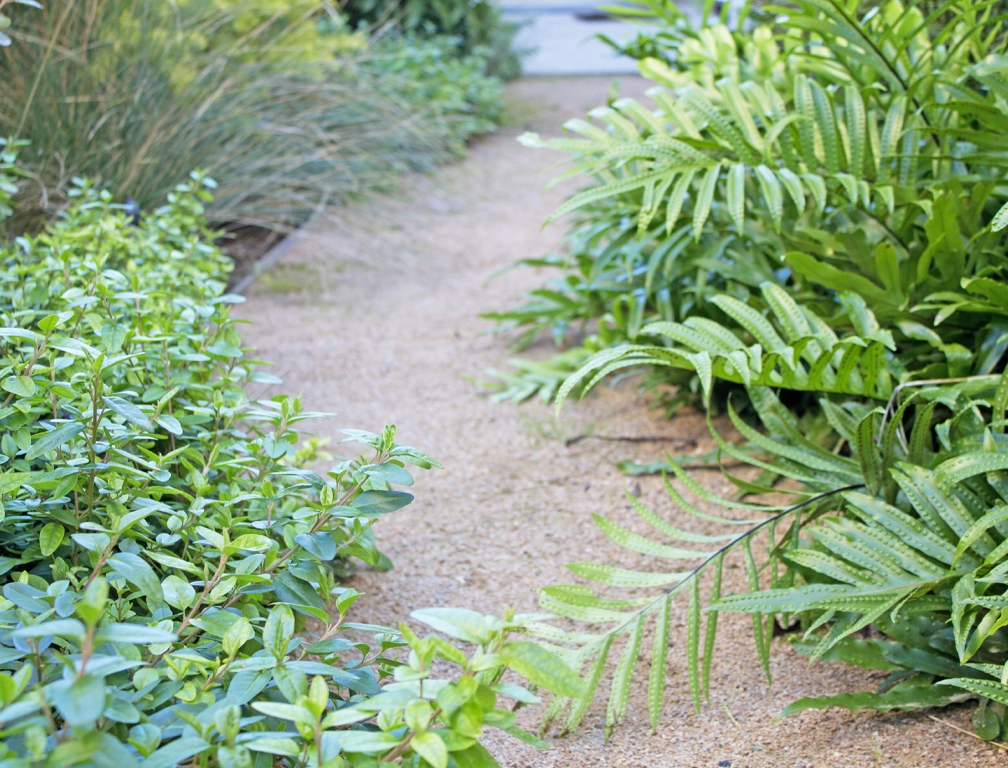
Dromana Topping (fine granite), credit Ploterra
5. Grass Pavers
Grass pavers offer a practical pathway option that combines greenery with structural support. These pavers have open spaces that allow grass to grow through, creating a natural look while providing a solid surface for foot traffic. They are a durable and sustainable choice, promoting water drainage and blending well with surrounding landscapes. Grass pavers are ideal for those looking for a simple, eco-friendly pathway that still provides functionality.
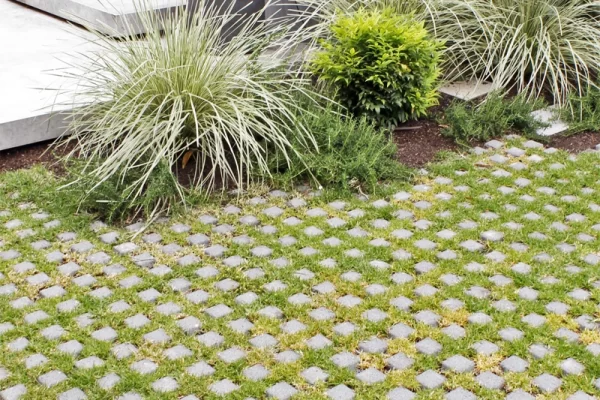
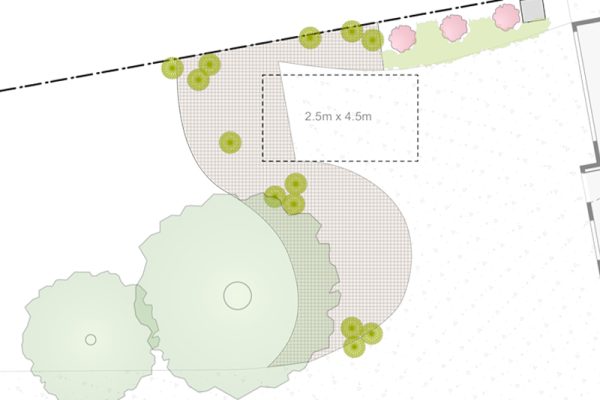
6. Timber path
A timber path made from recycled sleepers adds a natural, rustic feel to your garden. The earthy tones and textures of timber complement lush vegetation, making it ideal for gardens with a more organic or woodland aesthetic. Recycled sleepers are durable and sustainable, offering a solid yet environmentally friendly option for garden pathways.

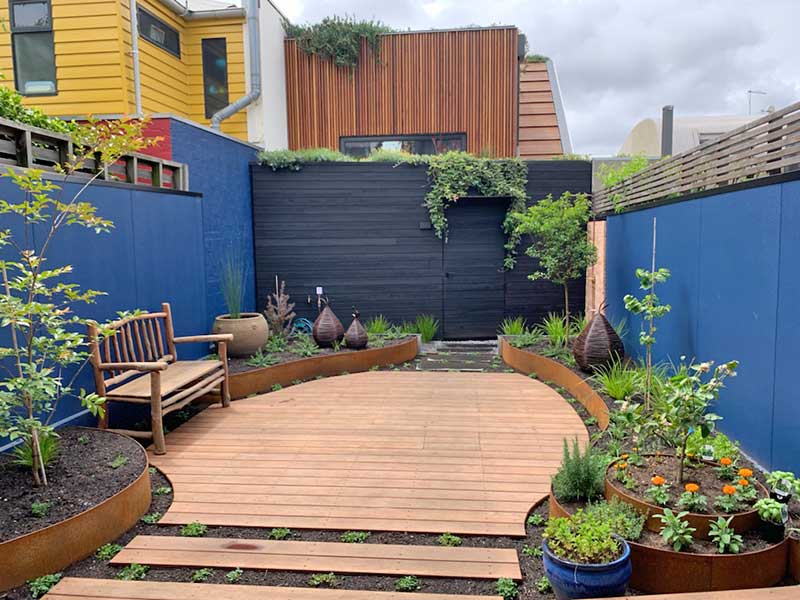
Choosing the Right Path for Your Garden
A well-planned garden path improves both accessibility and the overall look of your outdoor space. Whether you prefer the durability of natural stone, the softness of gravel, or the warmth of timber, selecting the right material can help create a functional and visually appealing pathway.
If you are planning a garden path and need advice on design or installation, Ploterra offers tailored landscape solutions to suit your space.

